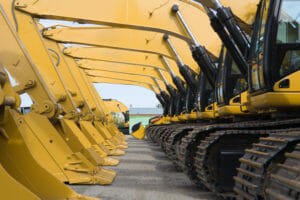Equipment management plays an essential role in all construction businesses, and a well-managed fleet can contribute to the success of a business. Good equipment management goes beyond just effective procurement; it is also about efficient operations, smart maintenance, and detailed, on-the-go monitoring. Such a comprehensive undertaking will be hard work, but it will create a safe work environment for your employees and will allow your jobs to proceed unencumbered. Although each entity’s equipment needs are different, there are a few things that every equipment manager should know.
Whether You Should Buy or Lease Your Equipment
Ensure your procurement team is working closely with your job schedulers. If you do need to secure new equipment, have standards in place that determine whether you should buy, lease, or rent. Some of the things you need to think about are:
- What will your utilization be?
Standard practice dictates that you should purchase equipment that you will use every day, and to lease or rent the rest. - Are you able to haul the equipment where it needs to go?
If not, renting may be the best option. - Do you have the space to store the equipment?
Storage costs money, and transferring items from storage to the job site takes time. - Do you have cash?
If not, can you (and should you) generate more debt? - What are the item’s maintenance expectations?
Include maintenance costs in your calculations to understand true equipment costs.
If your procurement team can rely on a pre-approved list of suppliers, brands, and models, their jobs will go even smoother.
How to Care For (and Dispose of) Your Equipment
Do not underestimate the power of routine maintenance. Schedule your maintenance using the metric that makes the most sense for your business – age, usage, miles driven – and coordinate with your job scheduler so that you can perform maintenance when your equipment is sitting idle. Routine maintenance will reduce your downtime, decrease emergencies, and improve machine efficiencies – all of which will save you money in the long run.
Timed disposals should also be part of your strategy. Using equipment that is outdated and inefficient can hamper your job progress, so schedule disposals just as you schedule acquisitions. Dispose of equipment when:
- You no longer use it or use it infrequently
- You can expect a good sales price because of high demand
- Newer versions are available that would lower your fuel costs or usage hours
- Repairs have been increasing in price
- Required maintenance has increased in frequency
How to Use Key Metrics
Know where you stand compared to others in your industry. Some key ratios to consider are:
- Maintenance Cost as a Percent of Revenue
By tracking this ratio, you can ensure your maintenance costs never get out of hand. - Fuel Usage per Run Hours
Use telematics to track your run hours to determine your fuel costs. Compare to stats on new equipment to see if you should upgrade. - Usage Ratio
See how frequently your equipment is being used. If your usage ratio is low, you may want to sell your equipment and rely on rentals for future projects. - Debt-to-Equity Ratio
Your bank will want to know your debt-to-equity ratio before loaning you any more money, and by comparing to industry standards, you can know if you have overextended yourself. - Average Age of Fleet
As your equipment ages, you become more susceptible to breakdowns and emergencies. By keeping track of your fleet’s age, you can ensure you are constantly upgrading. - Equipment Rates
Your equipment rate is the cost of using your equipment per hour, per mile, per day, etc. Keep track of rates by region, product line, project, and any other factor that is relevant to your industry.
There are hundreds of other metrics you can use to assess your fleet. Get into a routine of reviewing these ratios so that you can adjust your management practices as you go.
How to Budget and Plan
Your entire team should be involved in the planning process. For instance:
- Your CFO can help you budget for capital expenditures.
- Your workers can tell you which equipment models work best.
- Your shop team can give you the working conditions of your existing fleet.
- Your schedulers will know how to plan better for future jobs.
The planning process should be collaborative, and each department should be on board with the year’s budget. Your budget should include items like equipment costs, equipment hours, fuel costs, maintenance costs, emergency stoppages, travel time, procurement delays, permit costs, interest expense, depreciation, insurance, and many others.
A well-managed equipment fleet can be the difference between a successful business and failure, and fleet management is getting easier as technology improves. You now have at your disposal reporting telematics, automated scheduling programs, training simulators, GPS tracking, and computerized maintenance management systems. If you have any questions about how to incorporate these new technologies into your business model or want advice on how to better manage your fleet, contact a member of the LaPorte Construction Industry Group today.

